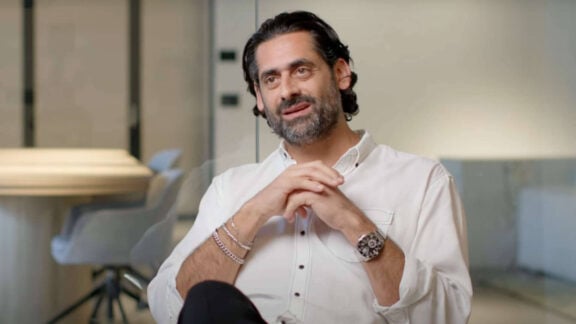How lucky am I? The FIFA World Cup is on and our two-and-a-half-month-old, Jack, hates sleeping. No prizes for guessing who has volunteered to help out with the overnight shifts.
Whilst watching Portugal’s Pepe do his best to trump Zinedine Zidane as the world’s best head butter, I challenged myself to come up with four different share portfolio formations. Your formation, or the way your portfolio is set up (weighted), is normally correlated to your investment philosophy and risk tolerance. Each formation has its rewards and risks, as well as degree of diversification. No country has won the World Cup with 9 strikers …well, perhaps Brazil. Keep in mind there are 11 players on the field at any given time, one of which is a goalkeeper.
Your goalkeeper (equates to a 9 per cent weighting: 1/11=9) remains constant. Each portfolio needs one gatekeeper, or more specifically, exposure to a preference share. Preference shares differ to ordinary shares, they’re supposed to be less risky and rank ahead of ordinary shares if the company is round up. They don’t appreciate in value rapidly but all things being equal, they don’t fall in value either. Low volatility stuff with a higher than average dividend. Put simply … low risk, low return holding that makes sure you don’t go behind on the scoreboard.
Defensive Formation: 5-4-1
Invest 46 per cent of your capital in five defensive companies (5/11=46), 37 per cent in 4 blue chip/cyclical companies (4/11=37) and 9 per cent in one attacking/growth company up front (9/11=9). Such a formation is best employed during a bear market, as your portfolio is more likely to outperform and your capital will be protected somewhat when the market is falling. The potential risk is your portfolio underperforming in the event of the market appreciating in value. The more defensively minded, or risk averse, you are, the more likely your portfolio will be weighted towards defenders and blue chip midfielders. Your defensive line of five stocks should include companies from defensive sectors such as healthcare, telecom, real estate and utilities. Every team requires experience at the back. Telstra, Westfield Group, CSL Ltd, Woolworths and Wesfarmers spring to mind, companies capable of producing reliable and predictable earnings, irrespective of what the opposition throws at them. The midfield group needs to maintain a similar defensive mindset but also take on the opposition (which is the overall market) when the opportunity arises. The banks are an ideal choice as a midfield group, they can track back and provide some protection to the defensive stocks but also accelerate earnings when momentum is with them. Up front, you need a young up-and-coming company capable of capitalising on opportunities, such as Carsales.com, which can find an opening on the field (market place) and score.
Counter Attack: 5-4-1
Counter attacking football can work quite well, just ask the Greeks in Euro 2004. Keep the same formation but with more attacking midfielders. Such a formation is best employed in a down trending market with potential for rallies. Continue to invest 46 per cent of your capital in five defensive companies, the midfield group should be split into two in order to set up the counter attack. Two attacking/growth stocks on the flanks (or 18.5 per cent of your capital) that are young up-and-coming companies capable of growing earnings quickly and can provide that acceleration in returns. Companies such as online real estate classifier REA Group or veterinary services company Greencross Ltd (GXL) – whose share prices have more than doubled in the past year. The other two midfielders (18.5 per cent) should remain as two blue chip defensively minded stocks, preferably with one play maker or market leader. Both must have a solid presence in their respective fields as a Macquarie Group (MQG) and AMP Ltd (AMP). Your lone striker up front continues to represent 9 per cent of your capital, and will only get minimal opportunities. In other words, when the market is running hot, it needs to convert that into good returns on the scoreboard. The opportunistic type, such as Seek (SEK) or JB Hi-Fi (JBH) that can pounce when its competitors are vulnerable, is ideal.
Balanced Formation: 4-4-2
If you like managed risk and the ability to chase gains, then a 4-4-2 formation is for you. This type of formation allows you to participate in market rallies, as well as close up shop at the back. Allocate 37 per cent of your capital to defensive companies, 37 per cent to midfielders (two blue chips and two growth stocks) and 19 per cent of your capital to two strikers. You can afford one of your strikers to be speculative in nature, meaning companies with great future prospects but who haven’t produced any results thus far. Don’t be afraid to introduce youth – companies that are young, growing aggressively and have their best years ahead of them. Childcare provider Affinity Education Group (AFJ) springs to mind. Your portfolio might become a little more volatile, but your long term performance will benefit from giving them game time. However, two of your back four, preferable the left and right back, need to push up and provide opportunities to your midfield and striking pair. Basically, your defenders need to do their role at the back and then push up. Your strikers need to convert but also help in the midfield. Your stocks have to work twice as hard for your portfolio to generate appropriate returns with this formation. For example, Ramsay Healthcare is a quality defensive company that produces reliable earnings. However, via acquisitions, it also grows earnings in percentage terms, by double digits. You get defence and attack all in one. One defensive/holding midfielder is needed, however you need a creative force, a company that can generate momentum such as Amcor (AMC).
All-Out Attack: 3-4-3
High risk, high return approach. You have an attacking high risk philosophy and you’re sticking with it. However, it’s worth remembering, in the world of finance, you don’t get remunerated for entertaining. All-out attack might get the adrenalin going, but it leaves you wide open at the back if the market starts coming at you. By allocating 28 per cent to the defensive half, it means your cyclical type midfielders (37 per cent of your capital) need to work hard both ways. Don’t be afraid to choose growth and speculative companies up front (28 per cent of your capital). In a bull market, you’ll be bringing home the cup and finishing on top of the league. If the market turns negative though, you’ll be managing from the dugout without any pants on.
*Sam Fimis is a stockbroker with Patersons Securities and author of Premiership Portfolio: 6 Step Guide to Succeeding in the Stock Market. www.premiershipportfolio.com | sfimis@psl.com.au








